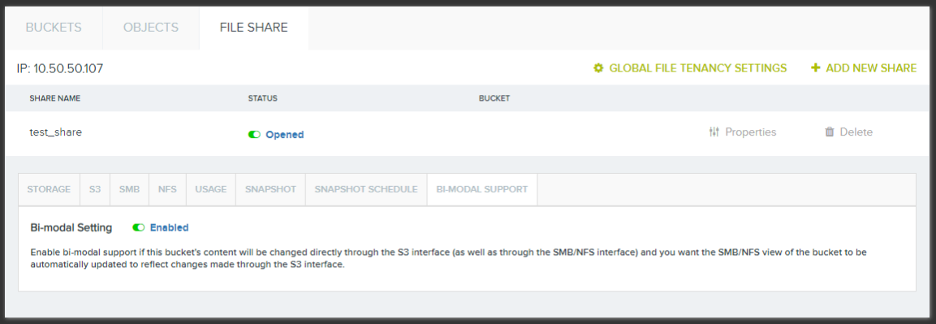Data management is constantly evolving, and versatility is key. Imagine this scenario: your team works on a project, with some members preferring traditional SMB or NFS protocols, while others use applications that employ object storage with the S3 API. With most storage systems, the SMB/NFS group would not be able to share data with the S3 API group. But wouldn’t it be great if your file and object data could seamlessly integrate across your mixed protocol environment, so that everyone could access all of the data, regardless of its format? Bimodal data access makes that possible.
What is bimodal access?
Bimodal access enables users to work with files and objects interchangeably within the same environment, bridging the gap between different types of data storage and access methods. It allows the simultaneous use of both traditional file-based protocols (such as SMB or NFS) and object-based protocols (such as S3 API) to access and manipulate data.

The Cloudian HyperStore 8.0 release introduces bimodal access as part of our continued investment into HyperStore File Services. Bimodal functionality is easily enabled via the Content Management Console (CMC) to empower users with unified data accessibility.

What are the benefits of using bimodal access?
Let’s review into the practical benefits of bimodal access:
- Unified Accessibility: Say goodbye to protocol silos. Bimodal access bridges the gap between SMB/NFS file shares and S3 clients, ensuring that changes made through S3-compatible applications are immediately reflected in SMB/NFS volumes as a client share, and vice versa. This unified accessibility keeps every team member in sync with the same data sets, regardless of their file or object protocol preference.
- Enhanced Collaboration: Collaboration becomes seamless with bimodal access. Whether your team prefers traditional file sharing methods or embraces the powerful advantages and flexibility of object storage, bi-modal access ensures unified collaboration by enabling real-time updates across all platforms. Compatibility issues become a thing of the past, fostering a streamlined workflow and unified data access where needed.
- Effortless Integration: Integrating S3 applications into your workflow becomes simple with bimodal access. No more toggling between different systems or dealing with compatibility headaches. Just enable bimodal support, and watch as your S3 applications seamlessly interact with SMB/NFS clients, ensuring a smooth workflow.
- Future-Proofing: Bimodal access ensures that your infrastructure remains adaptable to emerging technologies. Whether it’s embracing the latest file protocols or transitioning to leverage newer S3 API innovations, bimodal access ensures your data remains accessible and relevant in the ever-changing digital landscape.
- Simplified Management: Managing diverse data protocols is made easy with bimodal access. Administrators can effortlessly set up volumes as file shares for end-users, ensuring that each share utilizes the appropriate object storage bucket for backend data storage. This streamlined approach simplifies management tasks, allowing administrators to focus on more strategic initiatives.
Conclusion
Bimodal access revolutionizes data management by seamlessly integrating SMB/NFS and S3 protocols. It empowers teams to collaborate more efficiently, embrace emerging technologies, and future-proof their data management strategies. Why settle for storage silos and protocol constraints when you can realize and leverage bi-modal access? Experience the future of data management and the flexible benefits of Cloudian HyperStore today.
Learn more at cloudian.com
Or, sign up for a free trial

Glenn Haley, Senior Director of Product Management, Cloudian


